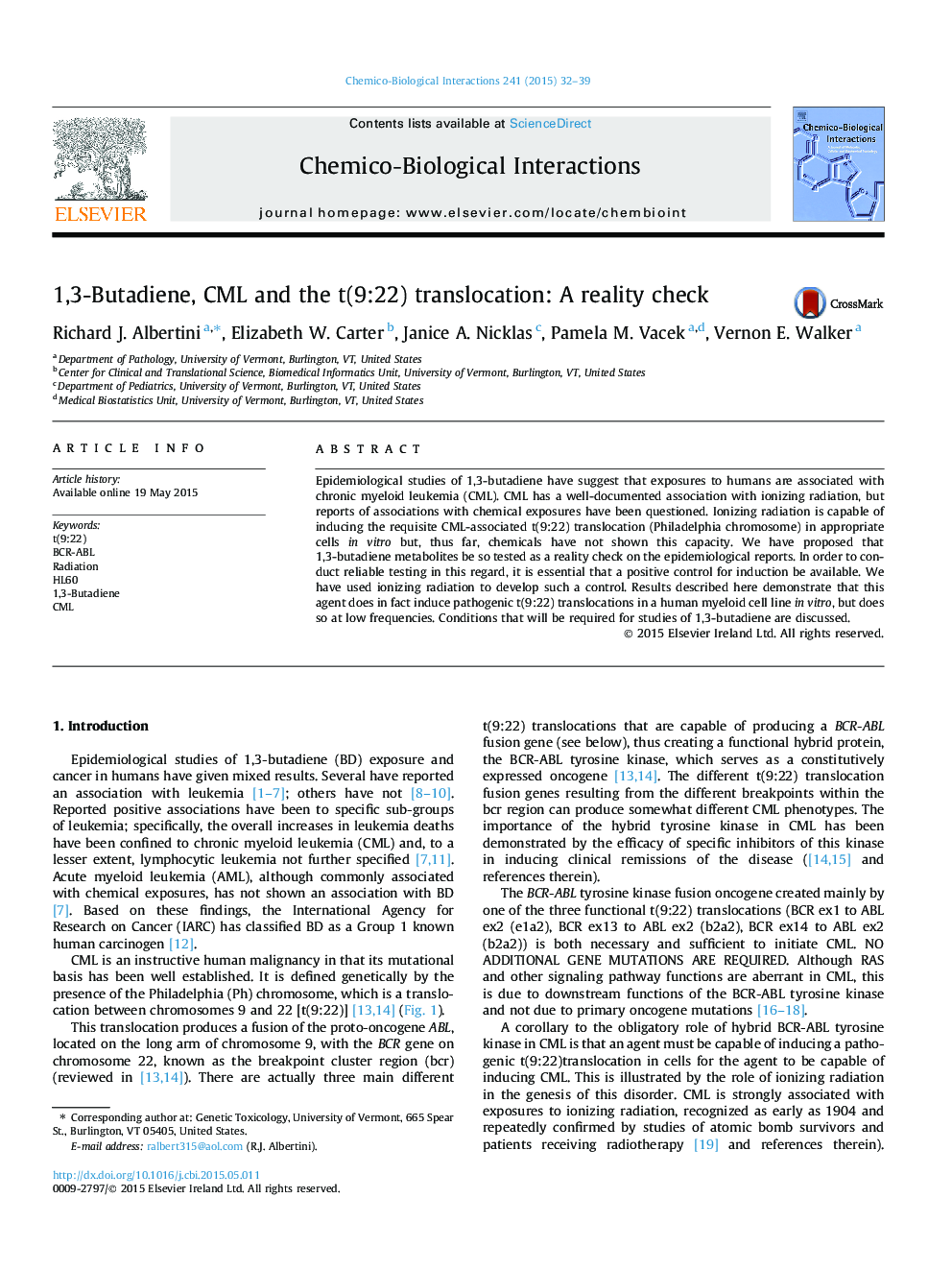| Article ID | Journal | Published Year | Pages | File Type |
|---|---|---|---|---|
| 5847730 | Chemico-Biological Interactions | 2015 | 8 Pages |
â¢The t(9:22) translocation (Philadelphia Chromosome) is required for CML.â¢No other genetic changes are necessary.â¢Ionizing radiation induces CML and this translocation in human cells in vitro.â¢Does 1,3-butadiene induce the translocation?â¢Testing will provide a reality check on epidemiology.
Epidemiological studies of 1,3-butadiene have suggest that exposures to humans are associated with chronic myeloid leukemia (CML). CML has a well-documented association with ionizing radiation, but reports of associations with chemical exposures have been questioned. Ionizing radiation is capable of inducing the requisite CML-associated t(9:22) translocation (Philadelphia chromosome) in appropriate cells in vitro but, thus far, chemicals have not shown this capacity. We have proposed that 1,3-butadiene metabolites be so tested as a reality check on the epidemiological reports. In order to conduct reliable testing in this regard, it is essential that a positive control for induction be available. We have used ionizing radiation to develop such a control. Results described here demonstrate that this agent does in fact induce pathogenic t(9:22) translocations in a human myeloid cell line in vitro, but does so at low frequencies. Conditions that will be required for studies of 1,3-butadiene are discussed.
